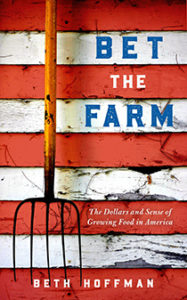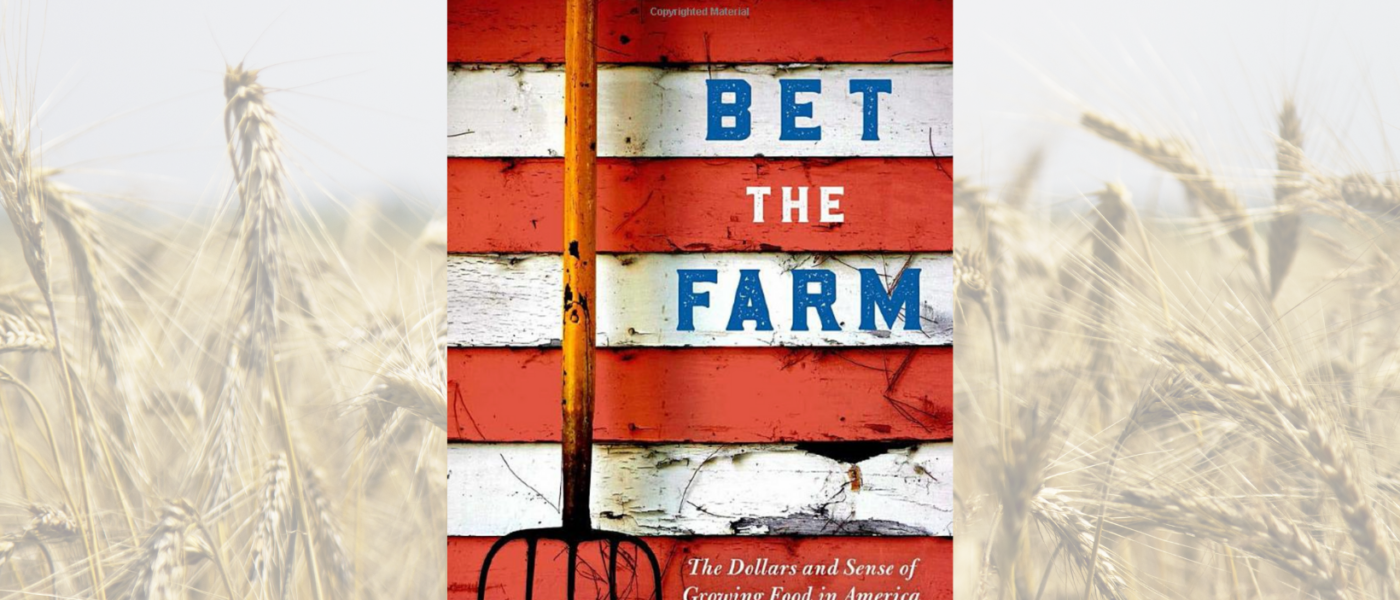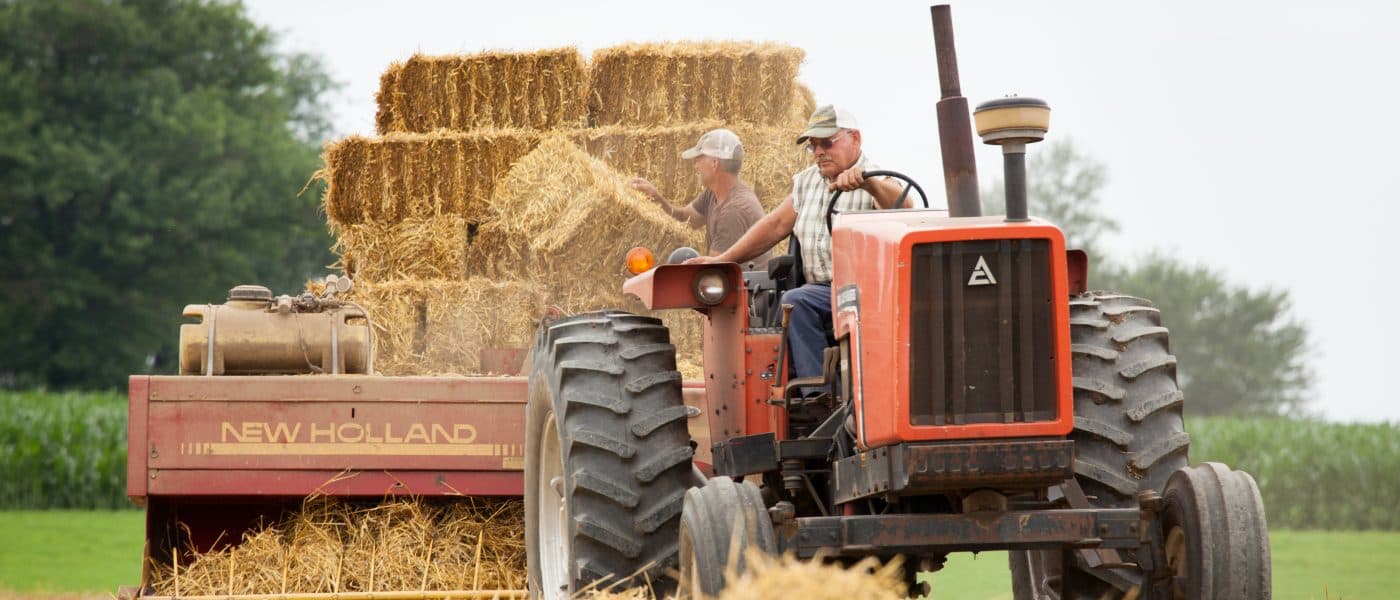Digging into Bet the Farm: The Dollars and Sense of Growing Food in America by Beth Hoffman, a reader might expect to find a lot of answers. The author has a 20-year career as a reporter covering food and agriculture. While Beth didn’t grow up on a farm, her mid-life turn toward agriculture is not a journey into the unknown. She says, “The idea of running a farm of my own feels like a gift, the culmination of my life’s work.” That work is apparent in Bet the Farm where Beth shares a wealth of knowledge, with clear-eyed analyses of everything from the history of commodities, factory farming and Black landloss, to the intricacies of farm finance, why it’s so hard for farmers to make a fair living, and why most farm families have at least one off-farm job. But the true value in this book lies in the questions it asks—most of them without supplying answers. Because the answers are up to all of us.
But let’s start at the beginning.
Beth and John, married and working non-farm careers in California, began to explore moving back to John’s family’s farm in south central Iowa a few years ago. John is the fifth generation in his farm family and he and Beth have traveled back each summer with their children to experience farm life. Beth, raised in suburban New Jersey, was nervous but excited by the prospect of making a full-time move to farming. As they get closer to deciding the time is right, though, John’s dad Leroy complicates their plans.
Like so many farmers approaching a farm transition, Leroy was still running the farm after more than 50 years and he wasn’t ready to turn it over. Not to mention, he had doubts that John and Beth could handle the challenge. Their dreams—of grass-fed cattle and small, organic grains—were the ideas of “city slickers,” in his eyes, and just meant work less and less income. Leroy’s operation had grown smaller as he aged, but renting his land out to a young farmer who farmed conventional corn and soy—the way Leroy had—earned him a comfortable living in addition to the cattle business he continued running. This challenge of transition is a common one in agriculture, though perhaps less known than the one in which the next generation does not want to take over the farm.
While it took some time, patience and compromise, Leroy, John and Beth finally came to an agreement for the farm’s transition, thanks in large part to The Beginning Farmer Center in Ames, Iowa. The conversation between the transition counselor and Leroy will be familiar to those who work in farm transition.
Dave, the counselor, asked, “Leroy, do you remember when you took over the farm? Do you remember how your dad wanted you to farm a certain way and you wanted to try new things? Did you make any mistakes?”
“Lots. All the time,” said Leroy.
“I did too,” Dave conceded.
John and Beth signed their lease for the farm in February of 2019 and began their move to Iowa. They found a lot of work needed to get the farm ready for its transition. In the process, they visited their local Farm Service Agency and Natural Resource Conservation Service office—agencies of the US Department of Agriculture charged with supporting American farmers—and discovered that they didn’t have any information to share about growing organically or about federal farm programs that could help. They offered that Beth and John might find more answers at the office one county over, where there was one organic farmer in the sea of conventional commodity growers.
On their 530 acres, renamed Whippoorwill Creek Farm (a nod to the bird John hoped would come back to the farm thanks to their regenerative farming methods), they began raising grass-finished cattle and exploring ideas like organic oats—a failure in their first attempt. Beth recalls having covered an event as an ag journalist where food company CEOs lamented a lack of organic oats grown in the US. After her first growing season, Beth knows the reasons for that phenomenon!
Nonetheless, at the end of 2019, the “bet” has paid off enough for Beth and John to sell their San Francisco home and quit their non-farm jobs to go all-in. Throughout the book, Beth acknowledges the privilege she and John hold—a farm passed down through the family, careers off the farm before they began that provided start-up funds, the proceeds of their home in the most expensive housing market in the country. She acknowledges the way that families like John’s received their land, through the forced removal of, and land theft from, Native Americans. She also documents the generational wealth that came to white farm families as a result of slavery and institutional racism.
“If we want new farmers to enter the profession, the economics of the farm need to be primary, albeit not the only, metric for success.”
As their own farm story unfolds, Bet the Farm delves into the challenges family farmers typically face—even with these privileges—from having affordable healthcare, and working off-farm jobs just to make the farm economics work, to the aging of the country’s farmer population. She also explores the “national mythology about farming,” theorizing that two stories dominate our collective narrative about farming and dictate how we think about farmers and how farmers see themselves.
The first she calls “bigger is better.” This concept has led to the massive consolidation of agriculture that we see today, underwritten by the idea that we must produce as much as possible to “feed the world.” Leroy offers some incredible insight into these matters. Of the rise in animal confinement operations in Iowa, he explains, “Things are always evolving. You don’t have the money to put the facility in, so you basically agree to become a hired hand on your own farm. It creeps in. It doesn’t just happen overnight.” He darkly predicts, “It is going to end up with just a few people controlling all of agriculture.” This narrative considers organic, small-scale farms like Beth and John’s to be “hobby farms,” and its worst outcome is the inevitable disappearance of rural towns and smaller farms.
The second story is “the tale of the rugged individualism that lies at the heart of our American ethos of independence and democracy.” This story is the one that leads farmers to believe that struggle is a natural and essential part of their work and lives. It’s the one that can lead farmers to sacrifice their own health and well-being for the farm, which contributes to the prevalence of stress and suicide among people who work in agriculture. And it pushes some small, sustainable farmers to sacrifice their income to fulfill their personal values of sustainability and justice, for instance charging below-market prices to those who struggle to access and afford healthy food. Beth writes, “If we want new farmers to enter the profession, the economics of the farm need to be primary, albeit not the only, metric for success.”

We agree with Beth when she says, “It is time for new story lines—not just stories about our own personal and farm experiences, but new national narratives. It is time to rethink who farmers are and what their work means to the security of our country, to reexamine a farmer’s relationship to the land and to our collective physical health. And it is essential that the new stories include an honest look at the challenges of farming so that it can be better define the problems and find real solutions.”
Beth sees this change occurring on four levels:
- The personal level—Individuals choosing not to over glorify the self-sacrifice and independence needed in farming;
- the farm level—Exploring ways for farming to bring people together and create collaboration;
- the community level—Exploring the interdependence of farms and the ways we can benefit from one another; and
- the national level—Working to figure out how policy, institutions and society can better support farmers.
Beth explores ideas on her own farm, with other farmers, in her community and at large. She finds change most accessible on the personal level. For instance, she learns that for her, the best approach is by doing less each day and realizing that the farm is going to take time. On the farm and community levels, she explores ideas for collaboration and finds no clear answers; a concept of co-farming with other farmers on their land, for now, seems out of reach. But Beth and John find lots of ideas and interest from the farm community about ways farmers can come together and build market and democratic power. On the national level, there is so much to do, from support for new farmers and existing farmers, and transition funds to help farmers move to regenerative and sustainable agriculture, to better healthcare, internet access and rural revitalization. But again, no easy or quick fixes.
Bet the Farm is a clear invitation to readers to help formulate at least some of the answers. As for Whippoorwill Creek Farm, Beth concludes, “Leroy has fully accepted that we are now the caretakers of this land.” And his knowledge, along with theirs, is key to their farm’s future. Looking big picture, the future of agriculture can only be improved with the next generation of farmers like Beth and John asking questions like these, and for those of us non-farmers to be involved in asking as well.
Learn more and buy the book


